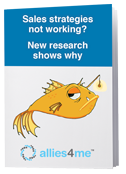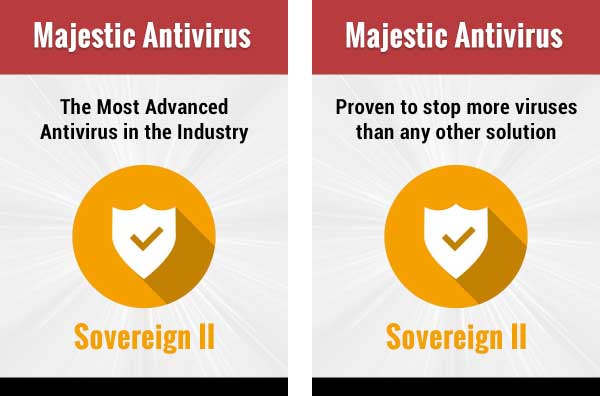
An example of loss minimizing ads taken too far
I was shocked awake one morning with a warning of my impending death on my computer display. Was Fat Tony or Sammy the Bull about to visit? No, just more bad marketing from Allstate. You know an advertiser is desperate when they threaten you with death.
You may have read about the saga of how the “Good Hands” of Allstate randomly added someone to my insurance policy without my permission. So, after 12 years, I dropped them. Now they just parade messages like “I could die” across my computer screen. Allstate was trying to tap into a principle called scarcity. We are psychologically drawn to items that seem scarce.
There is some science behind what Allstate is trying. But science is also behind nuclear fusion. Used one way, it creates clean energy. Used another way, it destroys the world.
Later that day, I was manning the allies4me booth at a conference when someone rolled a cooler of ice cream into the middle of the room. People walked back and forth with ice cream for 45 minutes while I talked to others visiting the booth. My anticipation grew. I wanted ice cream! I wanted a chocolate-covered drumstick with peanut sprinkles. I fantasized about that drumstick, and the pleasure of the last bite of chocolate at the bottom of the cone. When my moment arrived, I ran to the cooler, flung it open and grabbed a drumstick from a pile of many. Then out of the corner of my eye, I noticed a lonely Nestle Crunch bar. It was mine! Since it was the last one, I seized it and put the drumstick back.
That is the principle of scarcity in action. I had a strong opinion of what I wanted. But that opinion was instantly eclipsed by the power of scarcity.
 New research shows that buyers and sellers are misaligned. Get the latest survey results from over 500 global companies.
New research shows that buyers and sellers are misaligned. Get the latest survey results from over 500 global companies.
Dr. Robert Cialdini increased sales of the Bose Wave Radio using the principle of scarcity. When Bose launched with a headline focused on the “newness” of their product, sales disappointed. Cialdini changed the headline to “Hear What You’ve Been Missing” and sales rose 45%. Scarcity is about loss aversion. People are more motivated to minimize loss than to maximize gain.
Look at the following 2 ads and identify the one you are most drawn to.

Determine which ad you like best – Go with first impression – don’t overthink
If you are drawn to the first one, you are likely a “Pioneer” who pounces on the latest electronics as soon as they come out. But you are in the minority. The first ad is about maximizing gain, while the second ad is about minimizing loss. Most people choose the second ad. We constructed this test to illustrate Cialdini’s point.
We’ve done both live and blind testing on these ads and the results are always the same. The most fascinating thing we observe is that those who choose the second ad have a higher need to defend their choice. They provide a wide variety of criticisms of the first ad. Although the choice is made in the non-cognitive part of the brain (system 1), the cognitive (system 2) part of the brain has the need to explain why. When our cognition can’t explain the choice, it makes up reasons. Pioneers gravitate to the first ad, but the majority of society (non-pioneers) gravitates to the second ad.
Armed with this understanding, we categorize headlines into three categories:
- Gain Maximizing: The choice of many, but not effective in driving action.
- Loss Minimizing: Very effective in driving action (as in Bose sales increased by 45%).
- Chicken Little: Loss minimizing taken to the extreme of inciting fear.
Allstate’s “death ad” is clearly in the Chicken Little category and makes 2:00am infomercials look classy. Don’t take your brand there.
Harness the power of scarcity and use loss-minimizing messages. Look at how it helped Bose. Look at how it changed my choice in ice cream. It is your nuclear fusion. Use it improperly and you will scorch the earth. Use it properly and fuel your sales.
 New research shows that buyers and sellers are misaligned. Get the latest survey results from over 500 global companies.
New research shows that buyers and sellers are misaligned. Get the latest survey results from over 500 global companies.